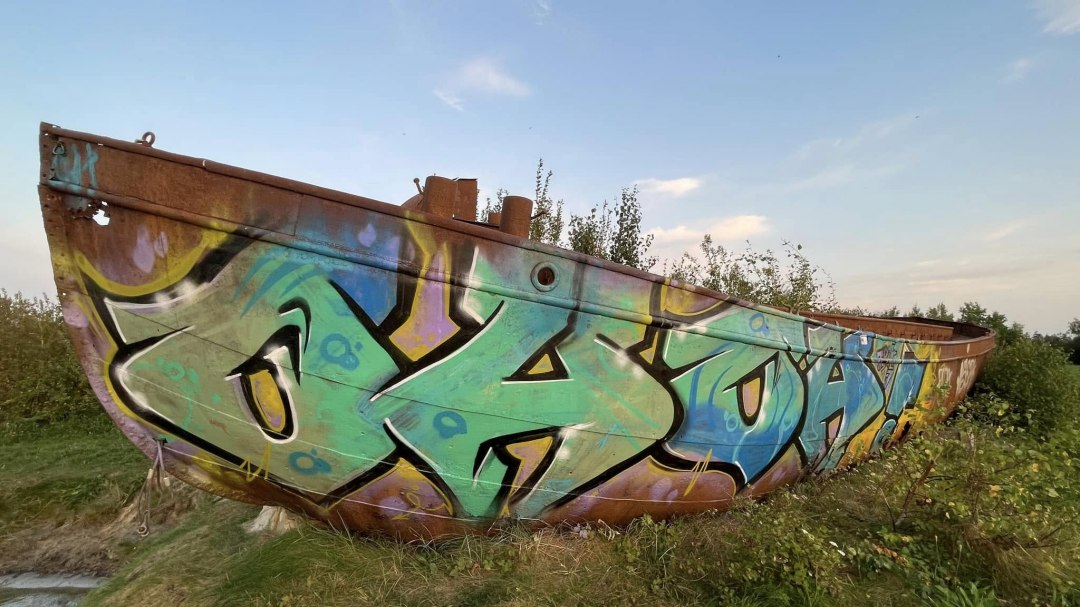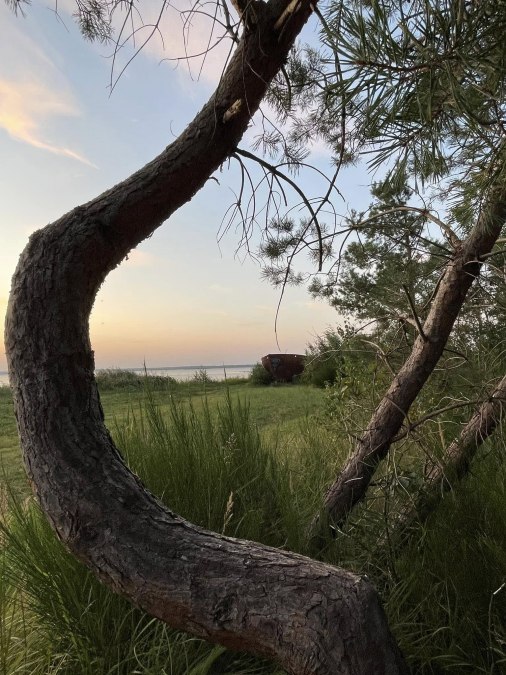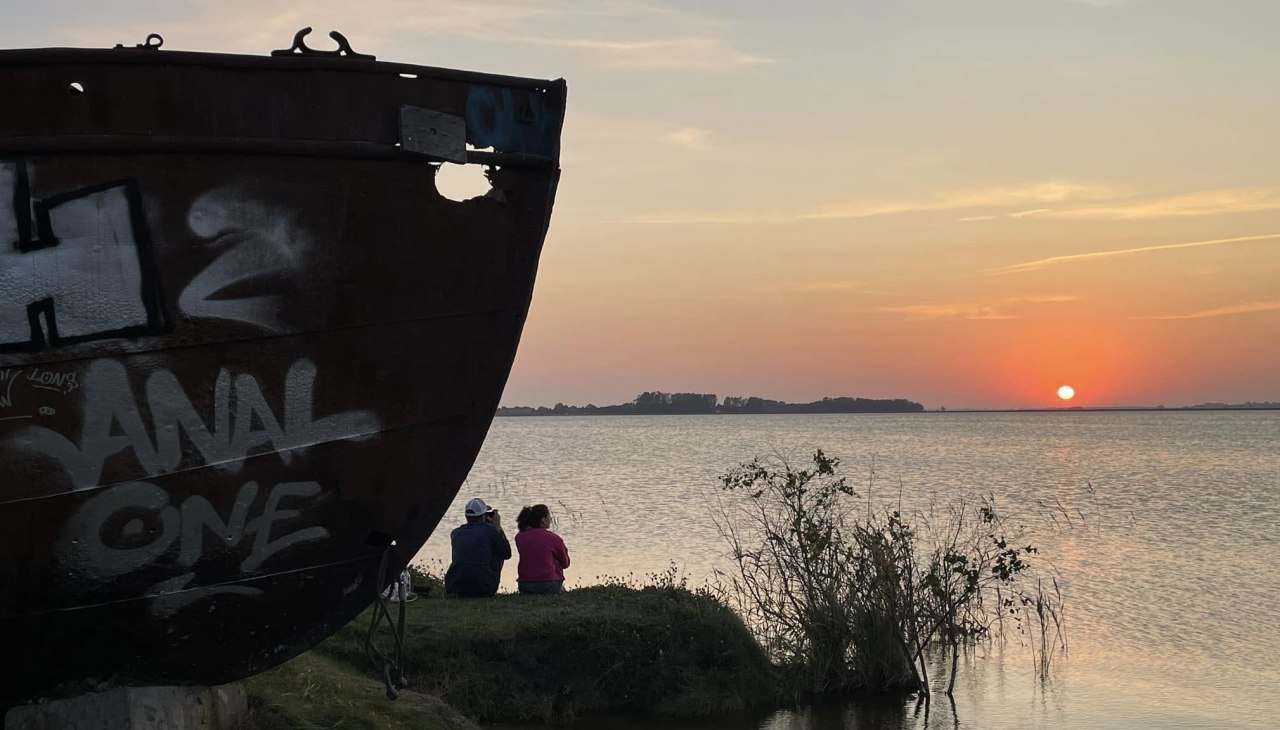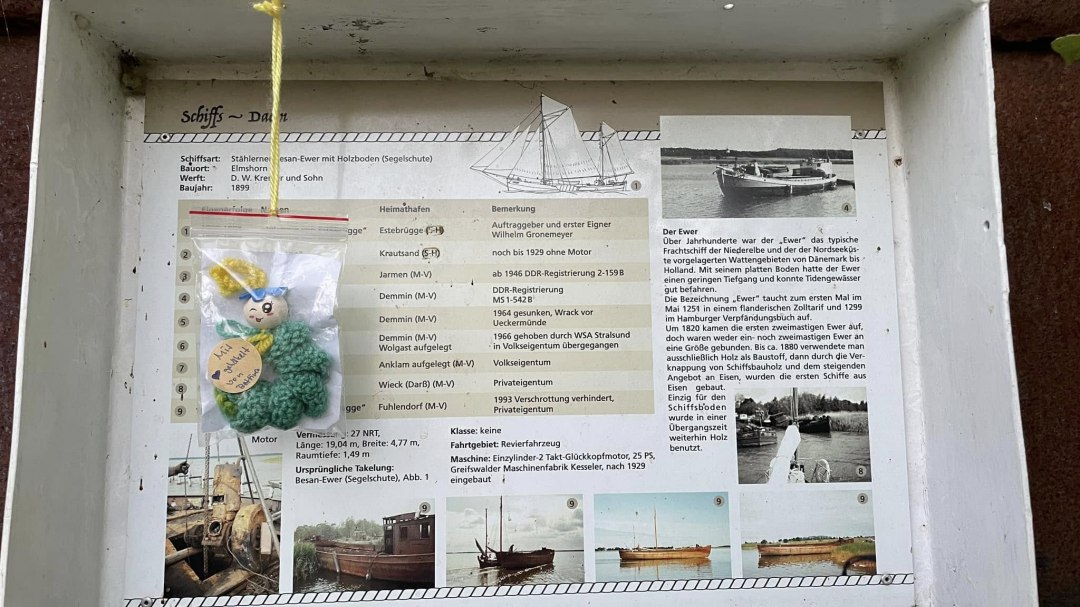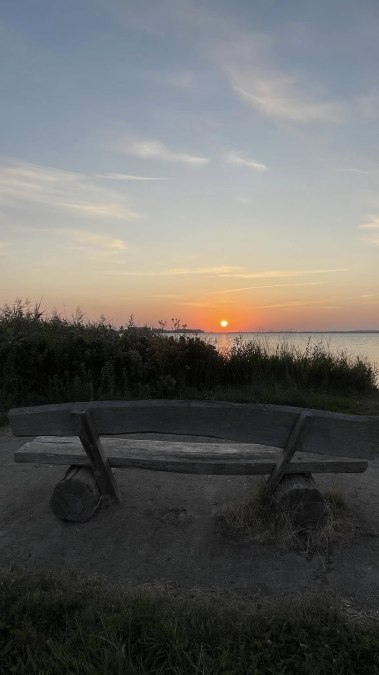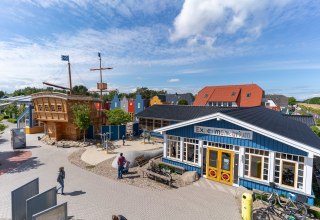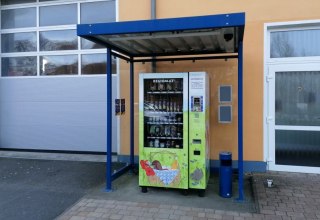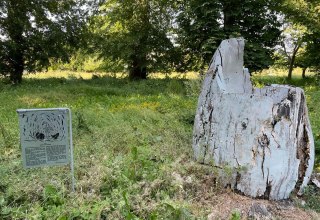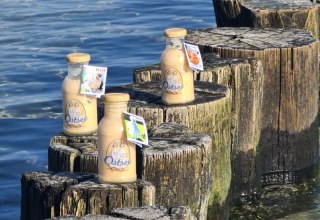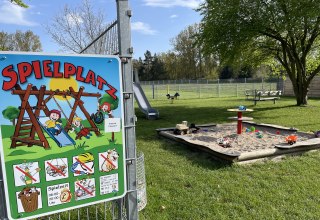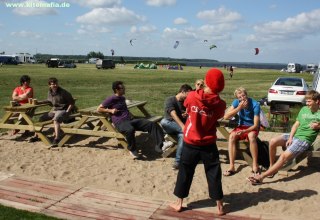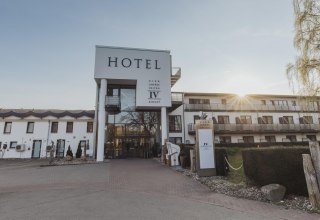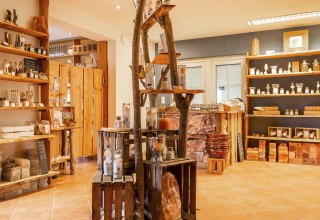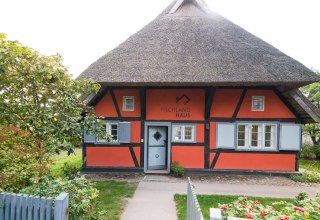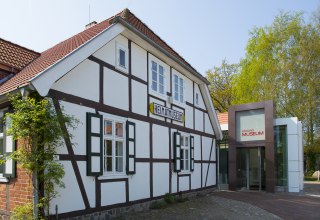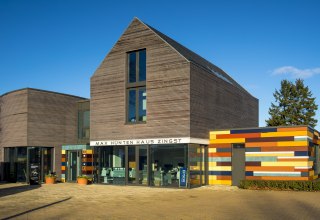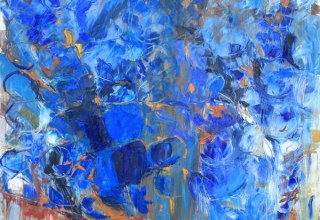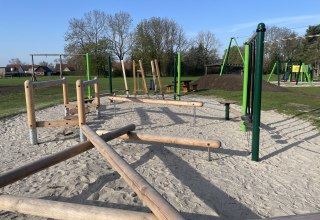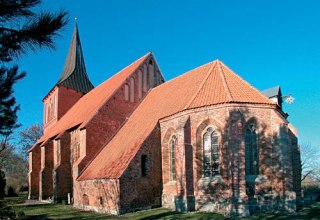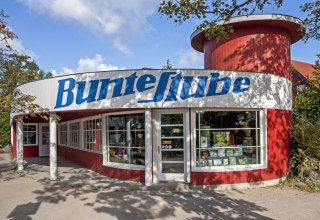The steel hull weighs tons on the Fuhlendorf Bodden beach, where "everyone" took their first swimming test at the swimming camp.
The wreck in Fuhlendorf is the steel mizzen barge (sailing barge) with wooden bottom JOHANNA, built in 1899 by D. W. Kremer in Elmshorn, commissioned by Friedrich Wilhelm Konrad Gronemeyer, a skipper from Estebrügge. Her home port was also Estebrügge.
Ship dimensions: Length: 19.04 m | Width: 4.77 m | 38.00 GRT
1909 Klaus Hagenah, skipper from Krautsand, captained the ship.
In 1929 Karl Voß from Jarmen became the owner. The JAHANNA was powered by a 25 hp engine
In 1955, Helene Voß, Jarmen, became the owner and sold the boat to
1955 to Hermann Darmann, Demin. He renamed the ship GERTRUD.
In 1964, the ship sank at Kamig Haken (entrance to Ueckermünde) and was brought to Wolgast on behalf of the Stralsund Waterways Authority.
In 1972, Karl-Heinz Jürgens from Wiek/Darß bought the barge, which lay in Wiek harbor for many years.
In 1993, Hans Joachim Jürgens sold the sailing barge to Wolfgang Burr from Fuhlendorf.
At Whitsun 1993, the ship, which had run aground, was made buoyant and transferred to Fuhlendorf.
A restoration was planned at the Inselwerft Horn shipyard in Wolgast, but did not materialize.
In January 1995, the hull was pulled onto the private beach in Fuhlendorf.
The name JOHANNA and the home port of ESTEBRÜGGE can still be read on the stern of the former sailing barge.
For centuries, the "Ewer", a sailing barge, was the typical cargo ship of the Lower Elbe and the Wadden areas off the North Sea coast from Denmark to Holland. With its flat bottom, the ewer had a shallow draught and could easily navigate tidal waters.
The term "Ewer" first appeared in May 1251 in a Flanders customs tariff and in 1299 in the Hamburg pledge book. The first two-masted ewers appeared around 1820, but neither one-masted nor two-masted ewers were bound to a size (ship class). Until around 1880, wood was used exclusively as a building material, then due to the shortage of shipbuilding timber and the increasing supply of iron, the first ships were built from iron. Wood was only used for the bottom of the ship during a transitional period.
In 2025, the municipality of Fuhlendorf acquired the neighboring stretch of Bodden beach. You can now reach the Bodden again via a public path through a boggy Bodden coastal forest and view the JOHANNA up close.

